23.02.2025
Starship Flight 8 vehicles prepare to join forces at Pad A
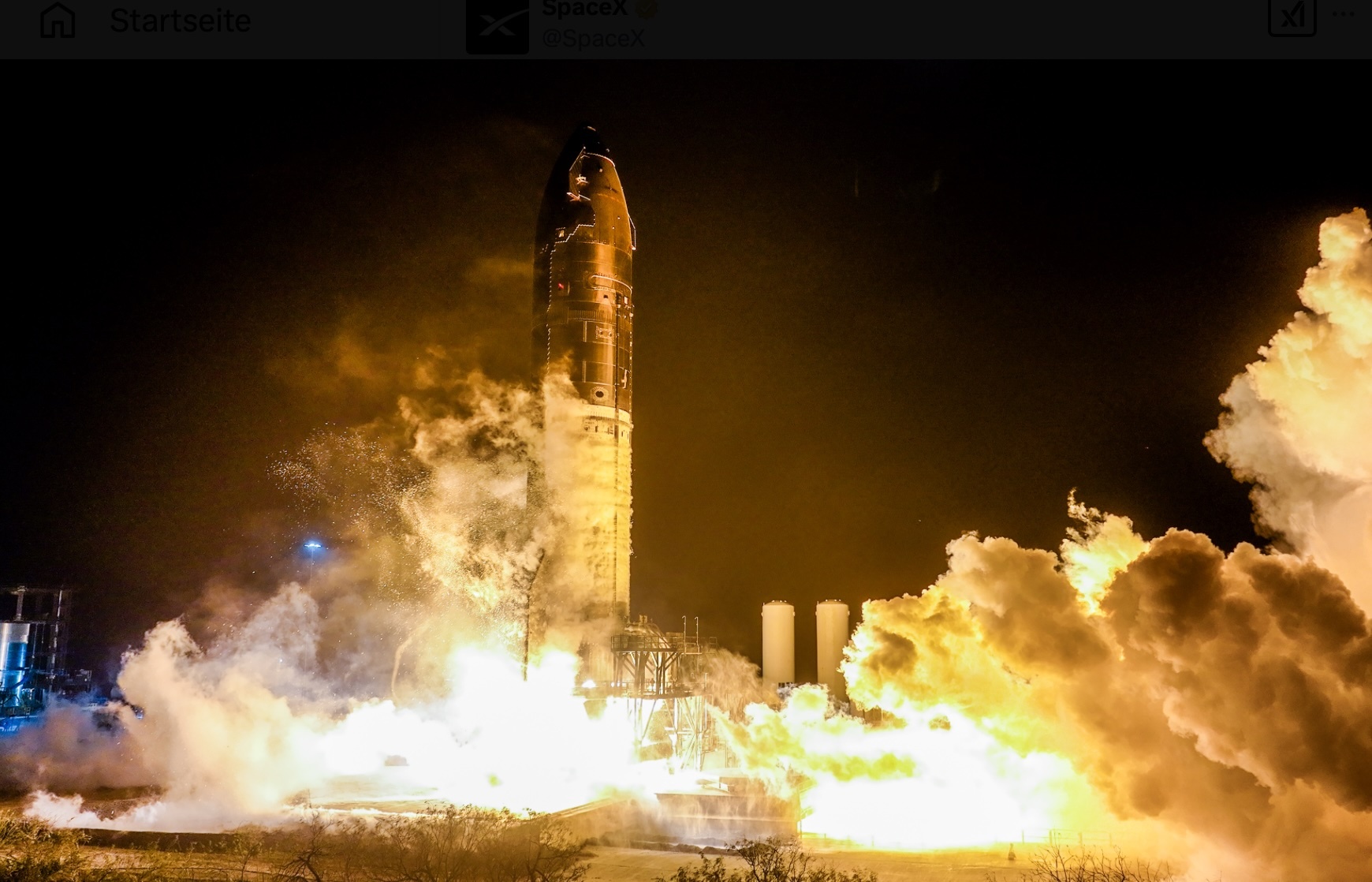
SpaceX has completed the engine test campaigns for both Ship 34 and Booster 15, which are slated to fly on Starship Flight 8. However, the Mishap Investigation for Flight 7 is still open and needs to be closed before Flight 8 can be approved to launch. Despite this requirement, SpaceX appears confident of approval by next week at the latest, after documentation showed launch opportunities opening on Feb. 26.
Last week, Ship 34 completed its engine testing campaign with a long-duration static fire. This static fire was nearly a minute long, and according to SpaceX: “The extended firing tested new hardware and cycled the six Raptor engines through multiple thrust levels to recreate different conditions seen within the propulsion system during flight. Data from the test will inform upgrades to the ship’s hardware and flight profile ahead of the next launch.”
The new hardware that SpaceX tested was likely related to the anomaly that occurred during Flight 7 and resulted in the loss of Ship 33. This could’ve been a leak in the Liquid Oxygen and Liquid Methane supply lines to the engines, which could’ve been the source of the fire seen during Ship 33’s ascent burn. However, there is no official confirmation from SpaceX regarding the actual cause of the failure.
This test was also done to inform of other upgrades to the vehicle and possible changes to the flight profile, so it is likely that SpaceX still has modifications to be made on Ship 34. It is unclear what these modifications could be or how long it will take SpaceX to implement them on Ship 34.
This long-duration static fire is the longest SpaceX has ever fired a Starship or Booster on the ground, and it can do this because of the flame trench at Masseys. It is unclear if this will be a one-time test, or if crews will do longer-duration static fire in the future.
Firstly, there are the dummy Starlinks which were loaded into Ship 33, a new batch of them was seen in Starfactory to be presumably loaded on Ship 34 just before rollout to the launch site. SpaceX might use the new Starlink loader box that was built inside High Bay, rather than the Tray Loader used on Ship 33.
As for the other items expected to be added to Ship 34, there is the actively cooled tile for testing as well as the catch pins. These catch pins are likely to be just bolted on as SpaceX does not intend to catch Ship 34. Lastly, crews will likely remove all of the tiles that were removed on Ship 33 to help understand the limits of losing a tile in certain places during reentry.
An interesting note about Ship 34’s engine testing campaign, is it took SpaceX 72 hours to roll it to Masseys, Static Fire it, and then roll it back to Mega Bay 2. This is a record compared to every other Ship in the past
Booster 15 was static fired on Feb. 9, and it was just the normal 10-second static fire with all 33 engines. With this out of the way, SpaceX rolled the Booster back into Mega Bay 1 for final checkouts and has since received its hotstage ring. SpaceX completed the rollout, mount on the Orbital Launch Mount, and rollback of the Booster in just over 61 hours, which is a new record for Boosters.
This Booster doesn’t have any major outside changes that are noticeable, but it was the first Booster to have the added tanks on the landing tank. But, older boosters were likely retrofitted with this upgrade.
Orbital Pad A and Regulatory
The final two pieces of the puzzle for Flight 8 are the launch pad and the regulatory side. First, SpaceX has finally found a rhythm with refurbishing Orbital Launch Pad A, which takes about two to three weeks to refurbish for a Booster static fire. Then, we will have another few weeks to get it ready for launch again.
The second piece is waiting for the mishap investigation to be completed, so far there is no indication of when this might be completed. However given the post SpaceX made after the long duration Ship 34 static fire, the final part of that investigation could be nearing a close. The next thing to watch out for is a SpaceX post detailing the anomaly’s cause and the fixes they are implementing.
The Federal Aviation Administration will also likely post about approving Starship for return to flight after the completed investigation. If SpaceX follows the same trajectory and splashdown locations, the license that is currently issued for Starship should still be current. Currently there is a Notice to Airmen (NOTAM) for Mexican Airspace for Feb 26, with a window of 6:30 pm to 8:09 pm Central Standard Time (CST).
With the release of this notice it is likely more will show up soon. However SpaceX still has a lot of work to do to launch Flight 8 in less than a week.
At time of publication, no road closures have been posted for the rollout of either the Booster of the Ship, likely meaning a rollout won’t be expected until early next week. SpaceX may no longer require a Wet Dress Rehearsal (WDR), which will allow SpaceX to move into launch day preps a lot sooner than previously achieved.
Quelle: NSF
----
Update: 26.02.2025
.
SpaceX targeting Friday for next test of Starship megarocket
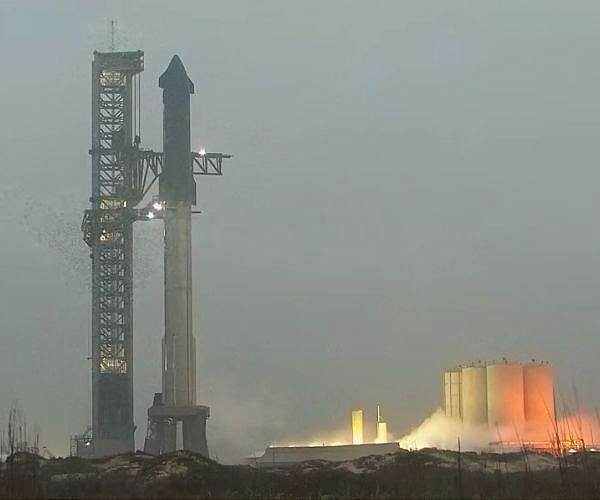
Elon Musk's SpaceX is preparing for the next test flight of its Starship megarocket on Friday, following a dramatic mid-air explosion over the Caribbean during its last trial.
A launch window from the company's Starbase facility in Boca Chica, Texas, opens at 5:30 PM (2330 GMT), pending regulatory approval.
It will mark the eighth test flight of Starship, the largest and most powerful rocket ever built, with SpaceX broadcasting the launch live via webcast.
The US Federal Aviation Administration (FAA) grounded Starship after its previous flight on January 16 ended with the upper stage disintegrating in a fiery cascade over Turks and Caicos, prompting cleanup and recovery efforts for fallen debris.
Under standard procedures, SpaceX must either complete its "mishap investigation" -- which the FAA must review and approve -- or request an early return to flight before the probe is finalized.
The FAA did not immediately respond to a query about the status of the investigation.
During Joe Biden's presidency, Musk frequently accused the FAA of excessive scrutiny of SpaceX over safety and environmental concerns.
Now, as President Donald Trump's closest advisor, the world's richest man faces allegations of wielding undue influence over regulatory agencies overseeing his companies.
For the upcoming flight, SpaceX has implemented numerous upgrades to the upper-stage spaceship that the company says enhance reliability and performance.
The mission is expected to last just over an hour and will include another attempt to catch the booster stage using the launch tower's "chopstick" arms -- a feat SpaceX has successfully executed twice, including during the last flight.
Additionally, the company will attempt to deploy Starlink simulators, designed to mimic next-generation Starlink satellites. These simulators will burn up upon atmospheric re-entry.
Starship plays a crucial role in Musk and SpaceX's long-term vision of colonizing Mars. Meanwhile, NASA is awaiting a modified version of the rocket to serve as a lunar lander for its Artemis program, which aims to return astronauts to the Moon.
Before these ambitious goals can be realized, SpaceX must first prove Starship is flightworthy and safe for crewed missions. The company also needs to demonstrate the capability for complex in-orbit refueling -- using other Starships as fuel tankers -- to enable long-distance space travel.
Quelle: SD
----
Update: 28.02.2025
.
The eighth flight test of Starship is preparing to launch as soon as Monday, March 3.

A live webcast of the flight test will begin about 40 minutes before liftoff, which you can watch here and on X @SpaceX. You can also watch the webcast on the X TV app. The launch window will open at 5:30 p.m. CT. As is the case with all developmental testing, the schedule is dynamic and likely to change, so be sure to check in here and stay tuned to our X account for updates.
After completing the investigation into the loss of Starship early on its seventh flight test, several hardware and operational changes have been made to increase reliability of the upper stage. You can read the full summary of the mishap investigation here.
The upcoming flight will fly the same suborbital trajectory as previous missions and will target objectives not reached on the previous test, including Starship’s first payload deployment and multiple reentry experiments geared towards returning the upper stage to the launch site for catch. The flight also includes the launch, return, and catch of the Super Heavy booster.
Extensive upgrades to Starship’s upper stage debuted on the previous flight test, focused on adding reliability and performance across all phases of flight. Starship’s forward flaps have been upgraded to significantly reduce their exposure to reentry heating while simplifying the underlying mechanisms and protective tiling. Redesigns to the propulsion system, including a 25 percent increase in propellant volume over previous generations, add additional vehicle performance and the ability to fly longer duration missions. And the vehicle’s avionics underwent a complete redesign, adding additional capability and redundancy for increasingly complex missions like propellant transfer and ship return to the launch site.
During the flight test, Starship will deploy four Starlink simulators, similar in size to next-generation Starlink satellites, as the first exercise of a satellite deploy mission. The Starlink simulators will be on the same suborbital trajectory as Starship and are expected to demise upon entry. A relight of a single Raptor engine while in space is also planned.
The flight test includes several experiments focused on enabling Starship’s upper stage to return to the launch site. A significant number of tiles have been removed from Starship to stress-test vulnerable areas across the vehicle. Multiple metallic tile options, including one with active cooling, will test alternative materials for protecting Starship during reentry. On the sides of the vehicle, non-structural versions of Starship’s catch fittings are installed to test the fittings’ thermal performance, along with a section of the tile line receiving a smoothed and tapered edge to address hot spots observed during reentry on Starship’s sixth flight test. Starship’s reentry profile is designed to intentionally stress the structural limits of the upper stage’s rear flaps while at the point of maximum entry dynamic pressure. Finally, several radar sensors will once again be tested on the launch and catch tower’s chopsticks with the goal of increasing the accuracy when measuring distances between the chopsticks and a returning vehicle.
The Super Heavy booster for this flight features upgraded avionics, including a more powerful flight computer, improved power and network distribution, and integrated smart batteries.
Distinct vehicle and pad criteria must be met prior to the return and catch of the Super Heavy booster, requiring healthy systems on the booster and tower and a final manual command from the mission’s Flight Director. If this command is not sent prior to the completion of the boostback burn, or if automated health checks show unacceptable conditions with Super Heavy or the tower, the booster will default to a trajectory for a soft splashdown in the Gulf of America. We accept no compromises when it comes to ensuring the safety of the public and our team, and booster return will only take place if conditions are right.
The returning booster will slow down from supersonic speeds, resulting in audible sonic booms in the area around the landing zone. Generally, the only impact to those in the surrounding area of a sonic boom is the brief thunder-like noise with variables like weather and distance from the return site determining the magnitude experienced by observers.
Developmental testing by definition is unpredictable. But by putting flight hardware in a flight environment as frequently as possible, we’re able to quickly learn and execute design changes as we seek to bring Starship online as a fully and rapidly reusable vehicle.
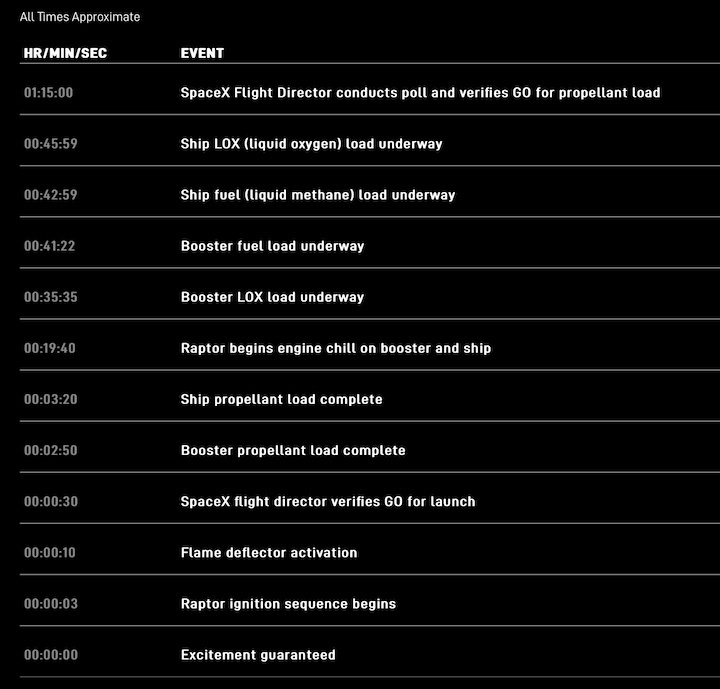
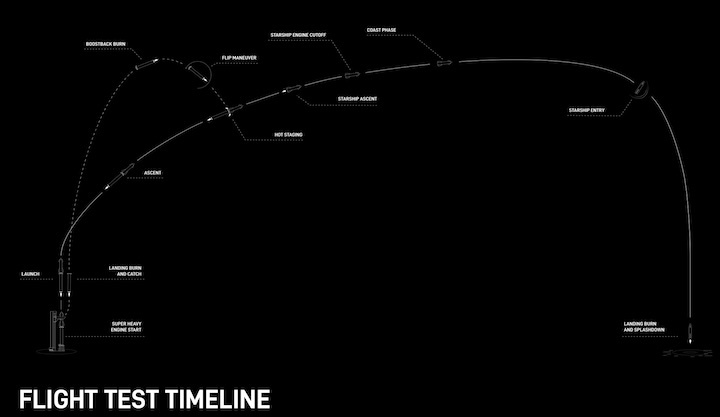

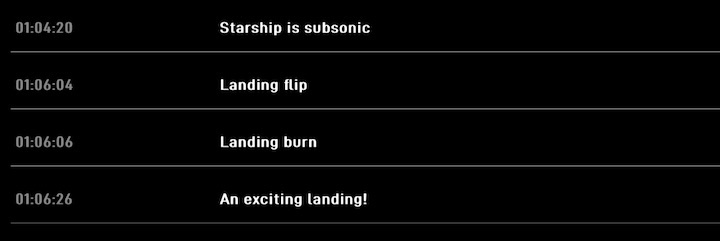
Quelle: SpaceX
----
Update: 4.03.2025
.
Last-minute problems with SpaceX's Starship forces delay of latest test flight
Last-minute problems have delayed the latest launch of SpaceX's mega rocket Starship
Last-minute problems forced a launch delay Monday for SpaceX’s mega rocket Starship, attempting a comeback following an explosion on the last test flight.
The countdown got down to the 40-second mark, but it was halted because of issues with the 403-foot (123-meter) rocket, the world’s largest and most powerful.
Starship was supposed to blast off from the southern tip of Texas with four mock satellites on board for a space-skimming test flight. If the problems can be fixed quickly, another launch attempt could come Tuesday, according to SpaceX.
The last Starship demo ended in an explosion over the Atlantic in January, with flaming debris streaming over the Turks and Caicos.
Starship has already been booked by NASA for astronaut moon landings later this decade. SpaceX's Elon Musk intends to use the mammoth rockets to settle Mars.
Quelle: abcNews
----
Update: 7.03.2025
.

Starship’s eighth flight test lifted off from Starbase in Texas at 5:30 p.m. CT on Thursday, March 6. The Super Heavy booster successfully lit its 33 Raptor engines and propelled Starship through a nominal first-stage ascent.
Approximately two and a half minutes into flight, the Super Heavy booster shutdown all but three of its Raptor engines as planned for hot-staging separation. Starship then successfully lit its six Raptor engines and separated from the Super Heavy booster to continue its ascent to space.
The Super Heavy booster then relit 11 of 13 planned Raptor engines and performed a boostback burn to return itself to the launch site. As Super Heavy approached the launch site, it relit 12 of the planned 13 engines at the start of its landing burn to successfully slow the booster down. The three center engines continued running to maneuver the booster to the launch and catch tower arms, resulting in the third successful catch of a Super Heavy booster.
Starship continued its ascent to its planned trajectory. Prior to the end of the ascent burn, an energetic event in the aft portion of Starship resulted in the loss of several Raptor engines. This in turn led to a loss of attitude control and ultimately a loss of communications with Starship. Final contact with Starship came approximately 9 minutes and 30 seconds after liftoff.
Starship flew within a designated launch corridor to safeguard the public both on the ground, on water, and in the air. Following the anomaly, SpaceX teams immediately began coordination with the FAA, ATO (air traffic control) and other safety officials to implement pre-planned contingency responses.
Any surviving debris would have fallen within the pre-planned Debris Response Area. There are no toxic materials present in the debris and no significant impacts expected to occur to marine species or water quality. If you believe you have identified a piece of debris, please contact your local authorities or the SpaceX Debris Hotline at 1-866-623-0234 or at recovery@spacex.com.
With a test like this, success comes from what we learn, and today’s flight will help us improve Starship’s reliability. We will conduct a thorough investigation, in coordination with the FAA, and implement corrective actions to make improvements on future Starship flight tests.
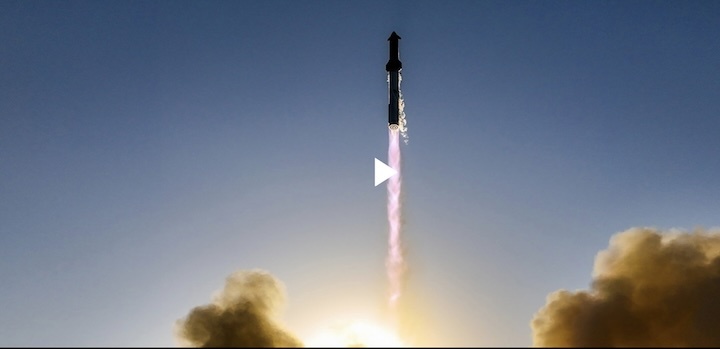
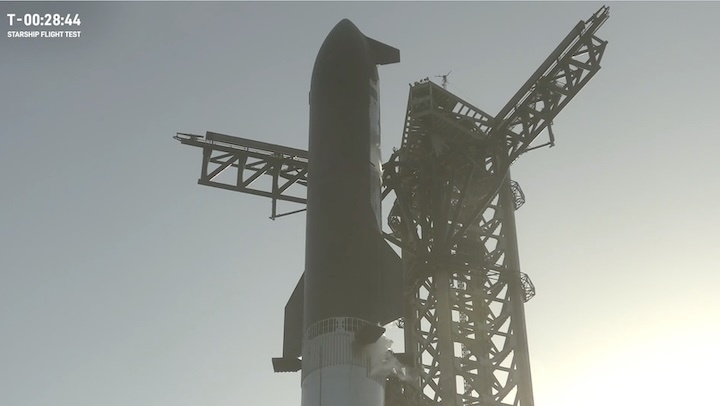
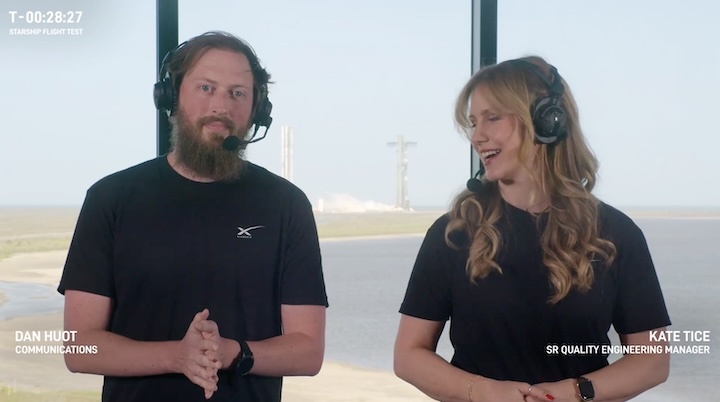
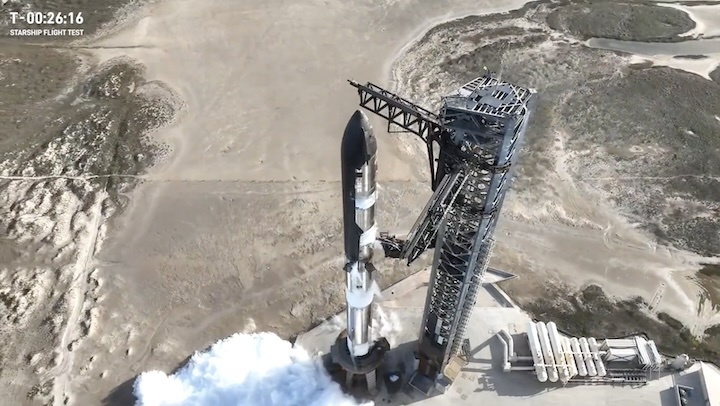
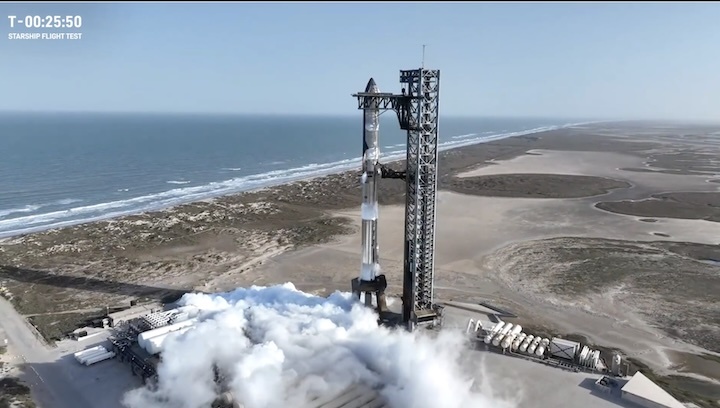
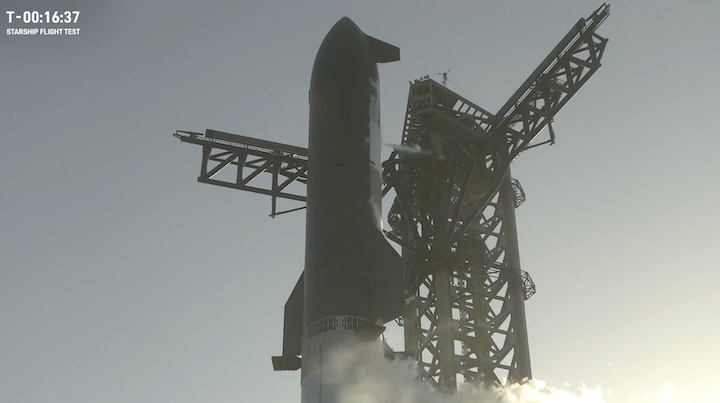
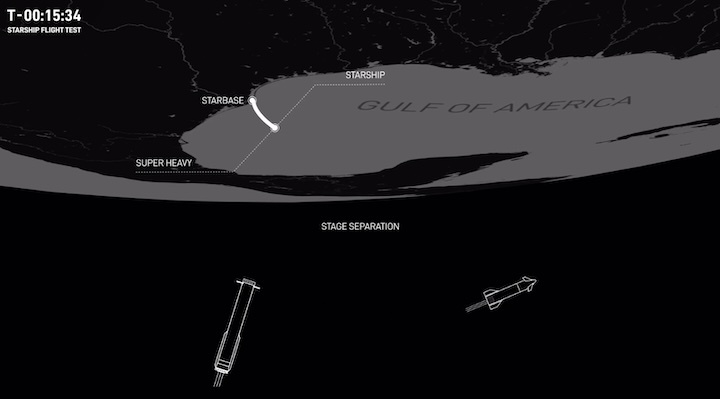
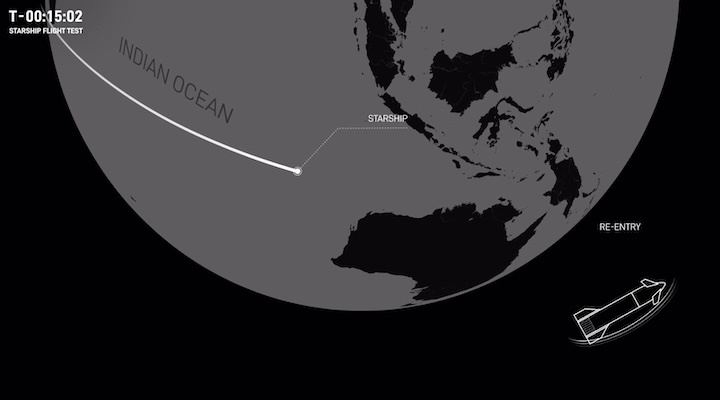
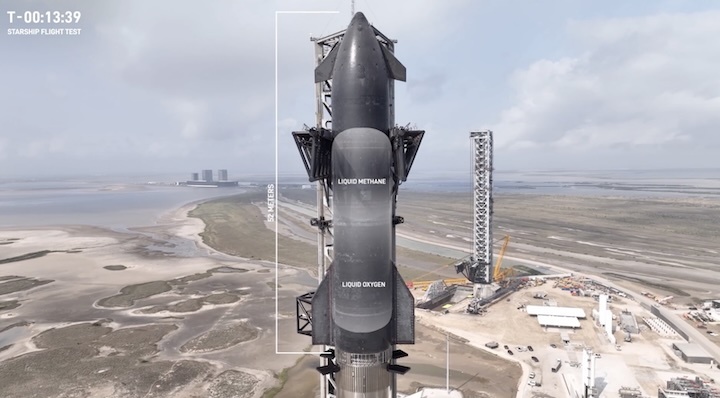
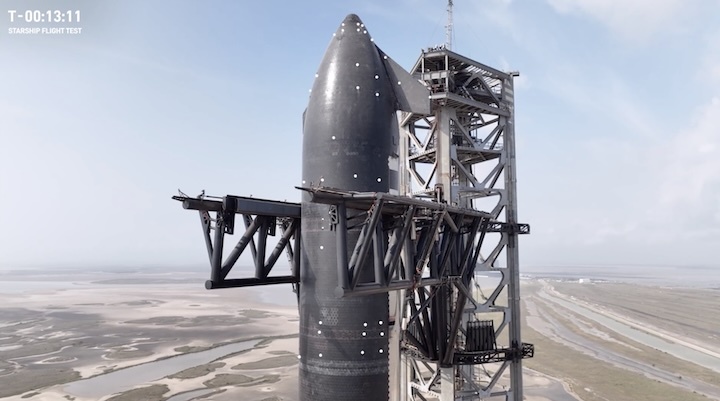
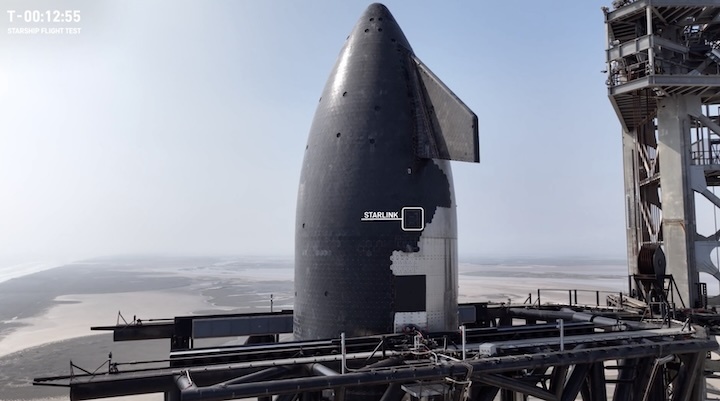
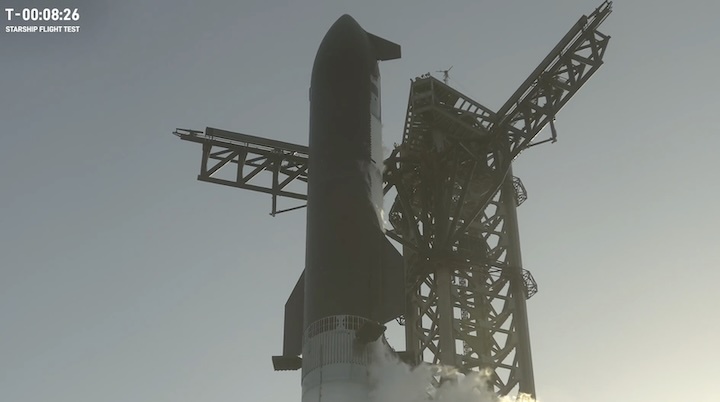
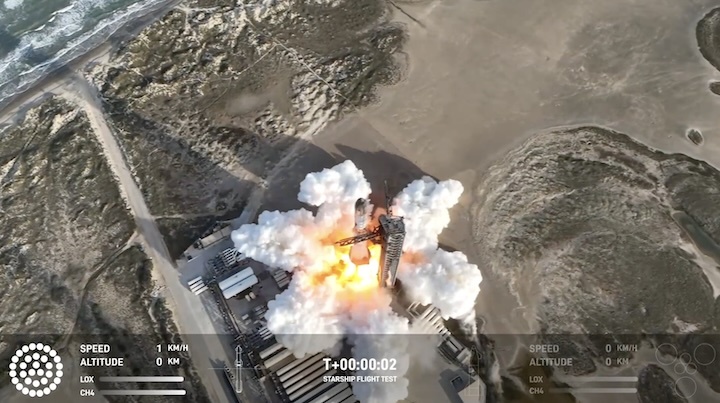
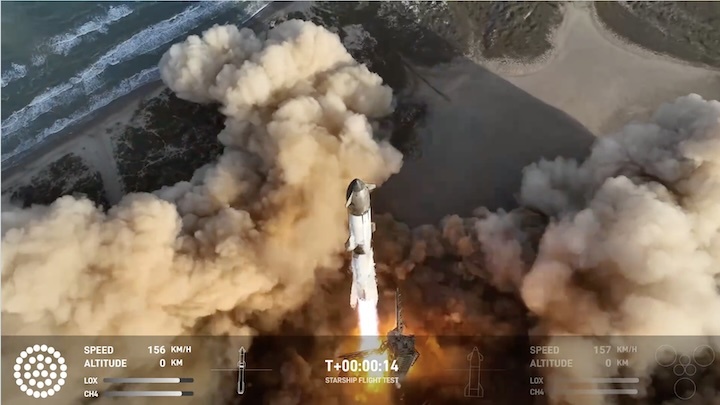
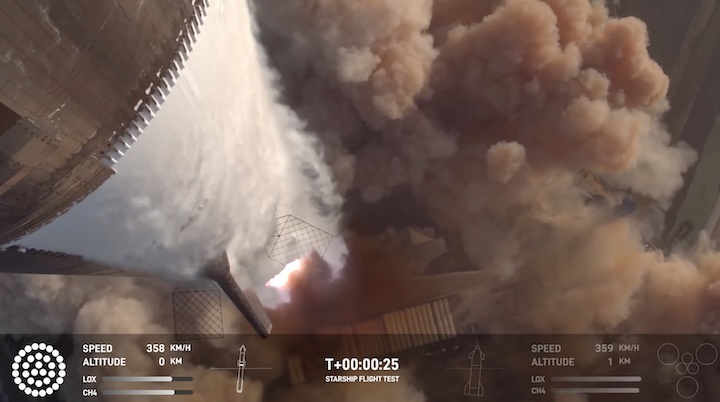
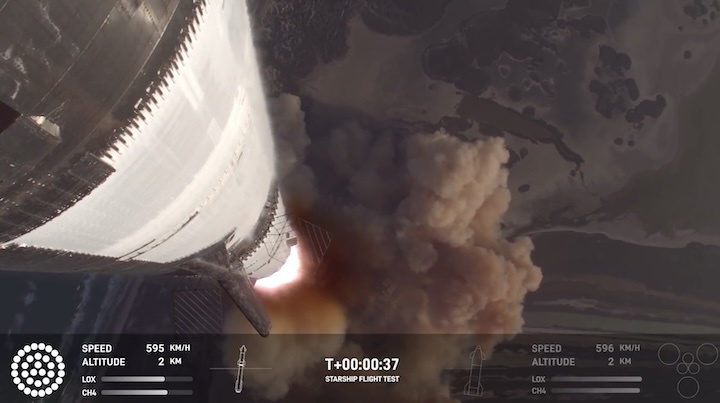
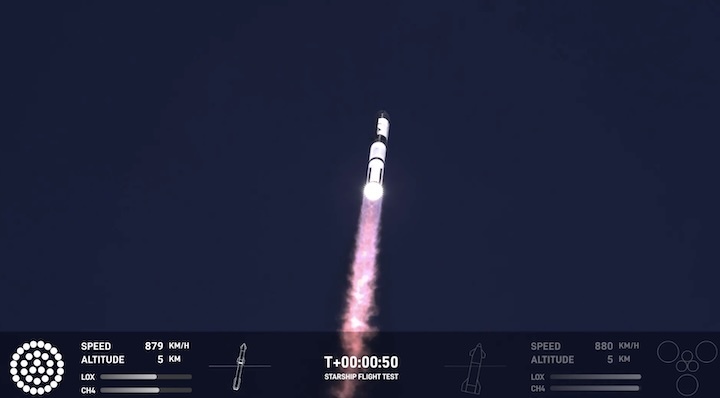
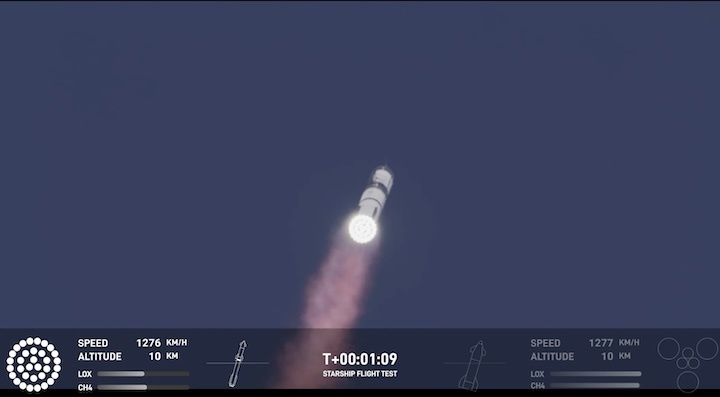
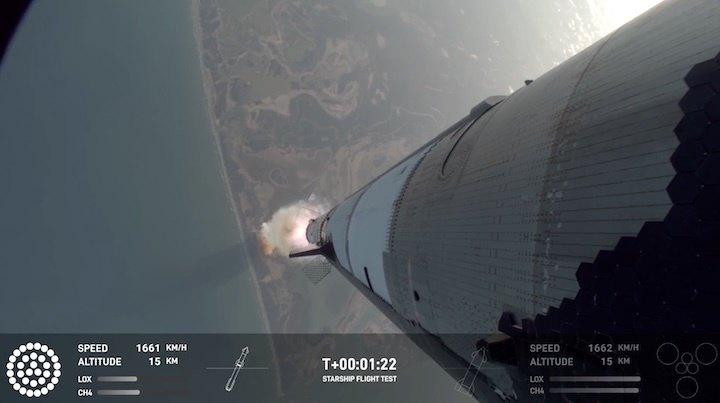
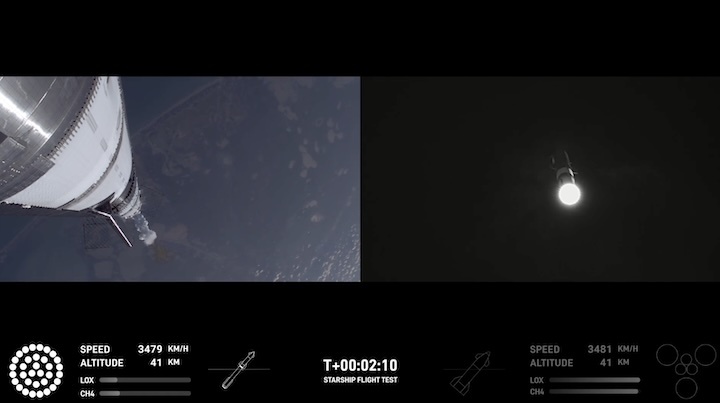
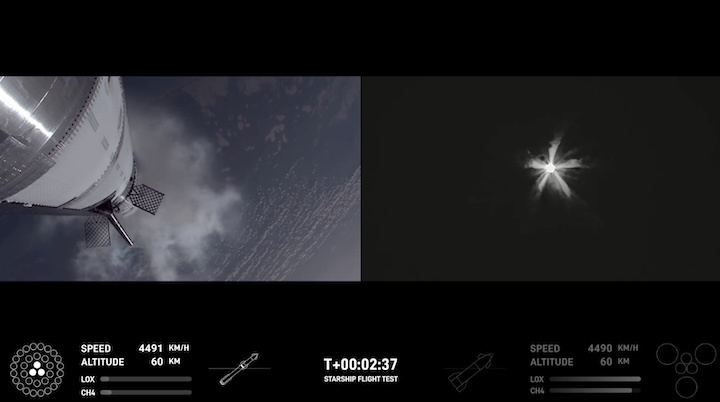
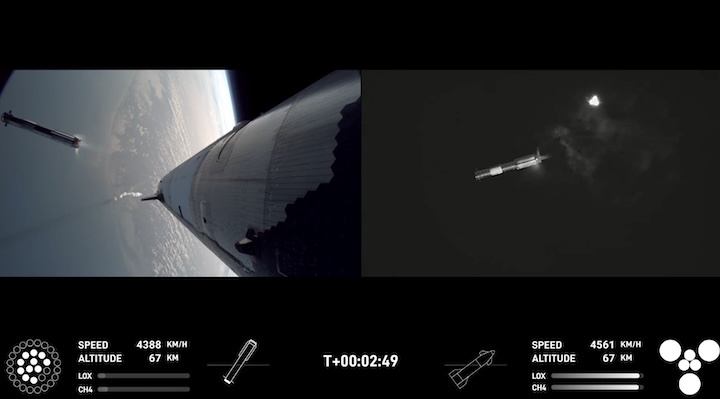
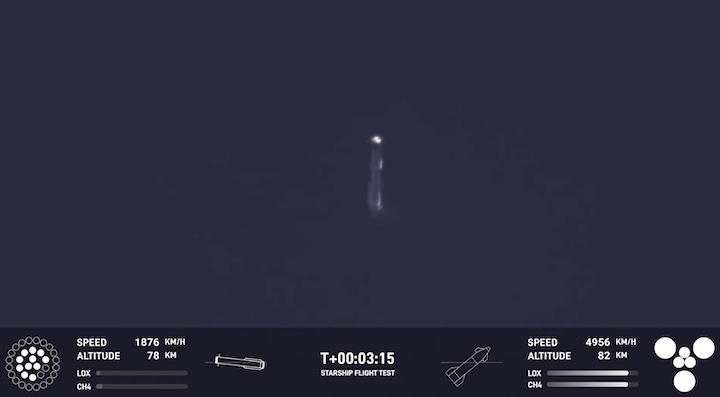
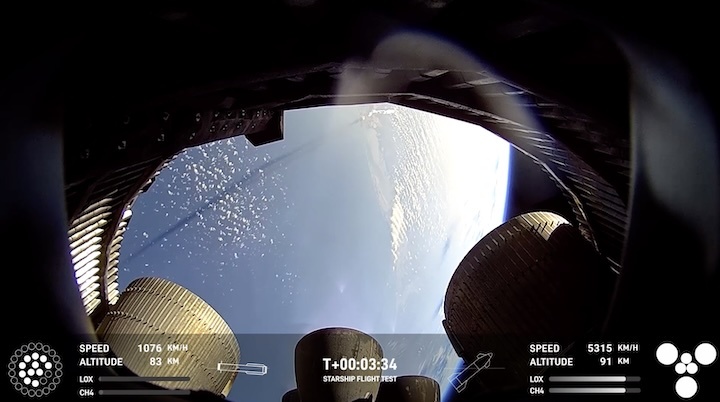
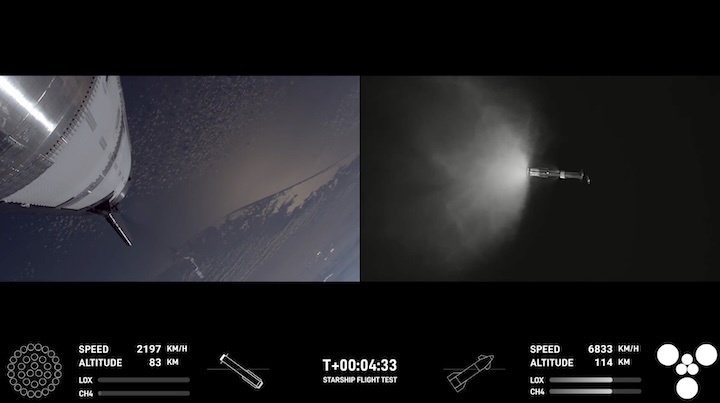

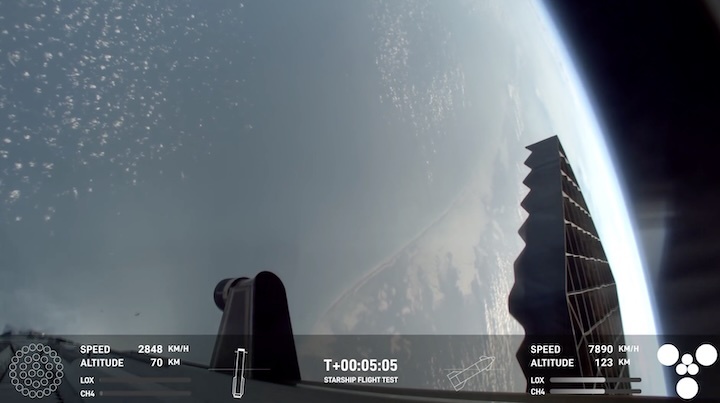

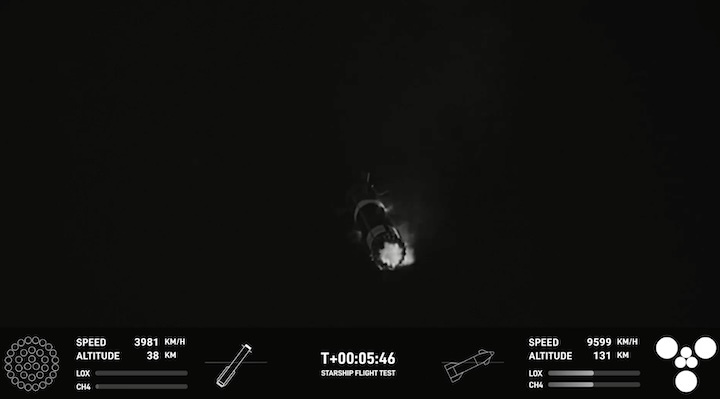
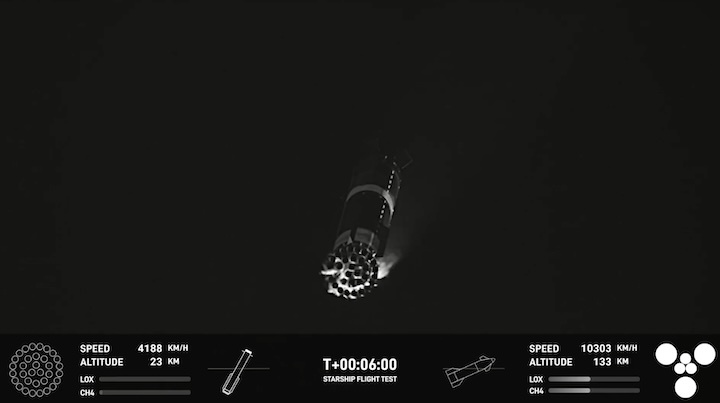
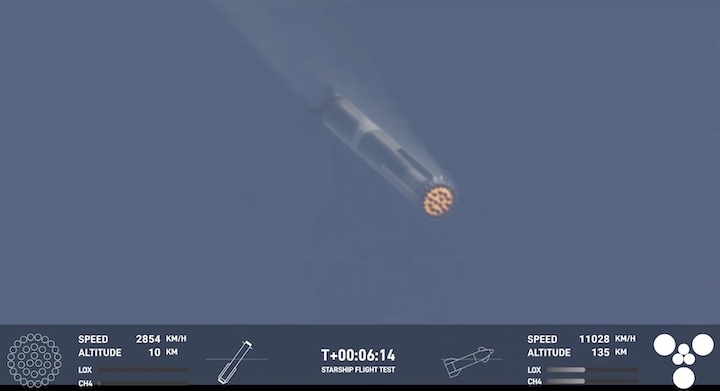
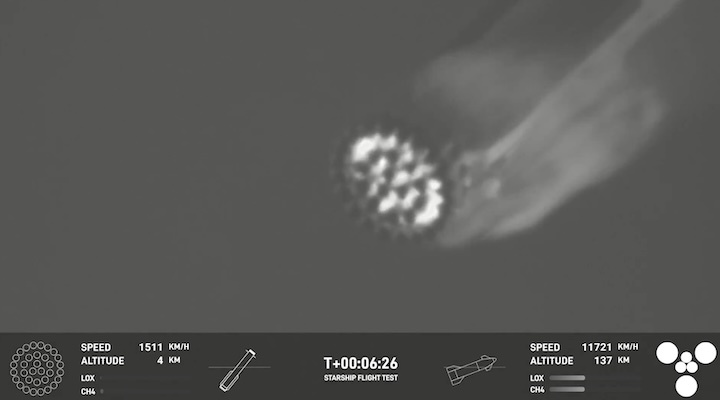
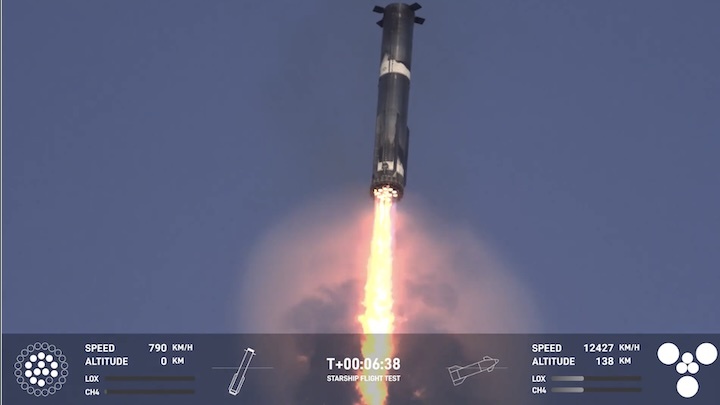
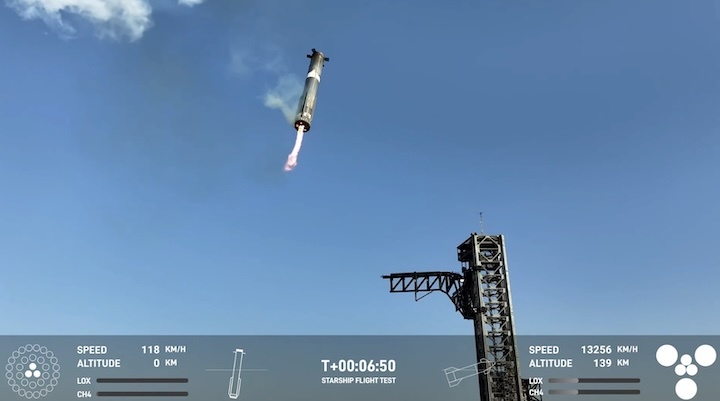
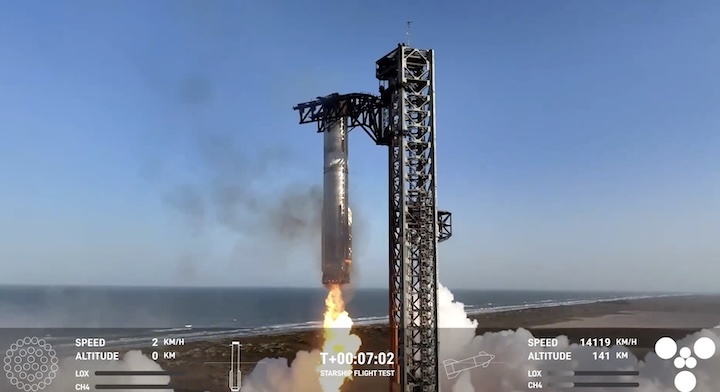


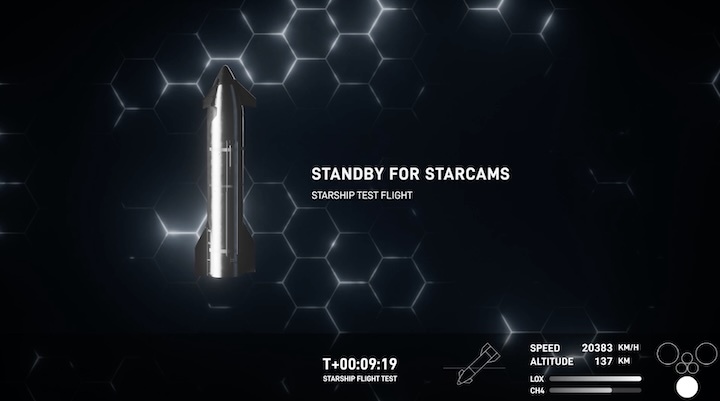
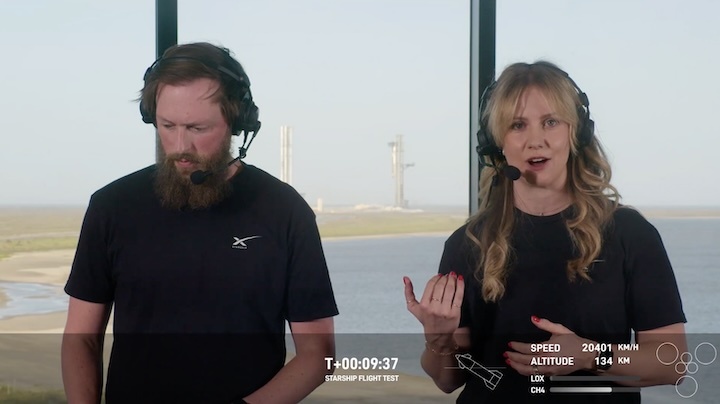
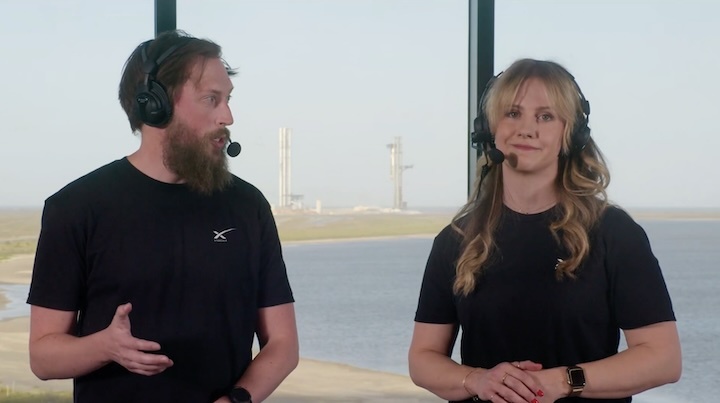
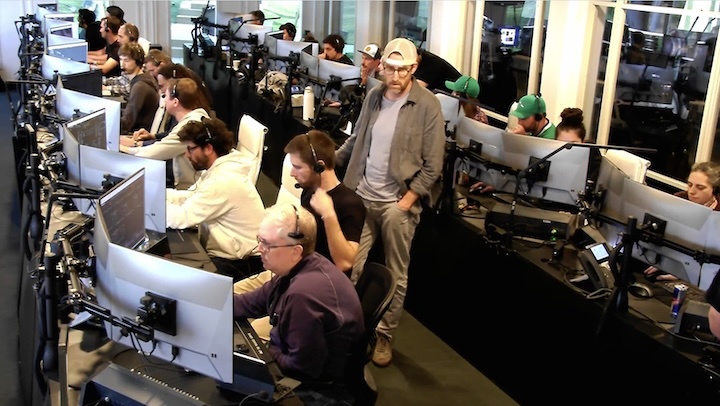
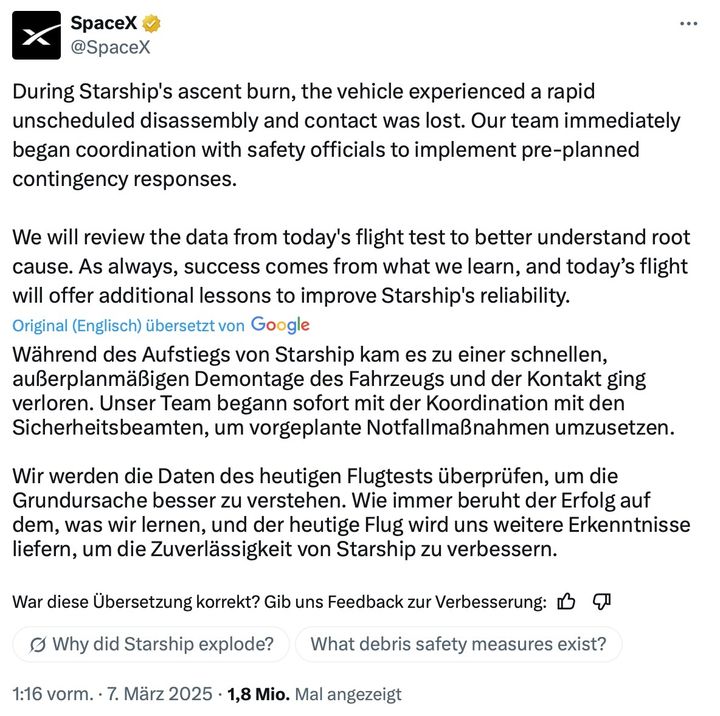
Quelle: SpaceX
